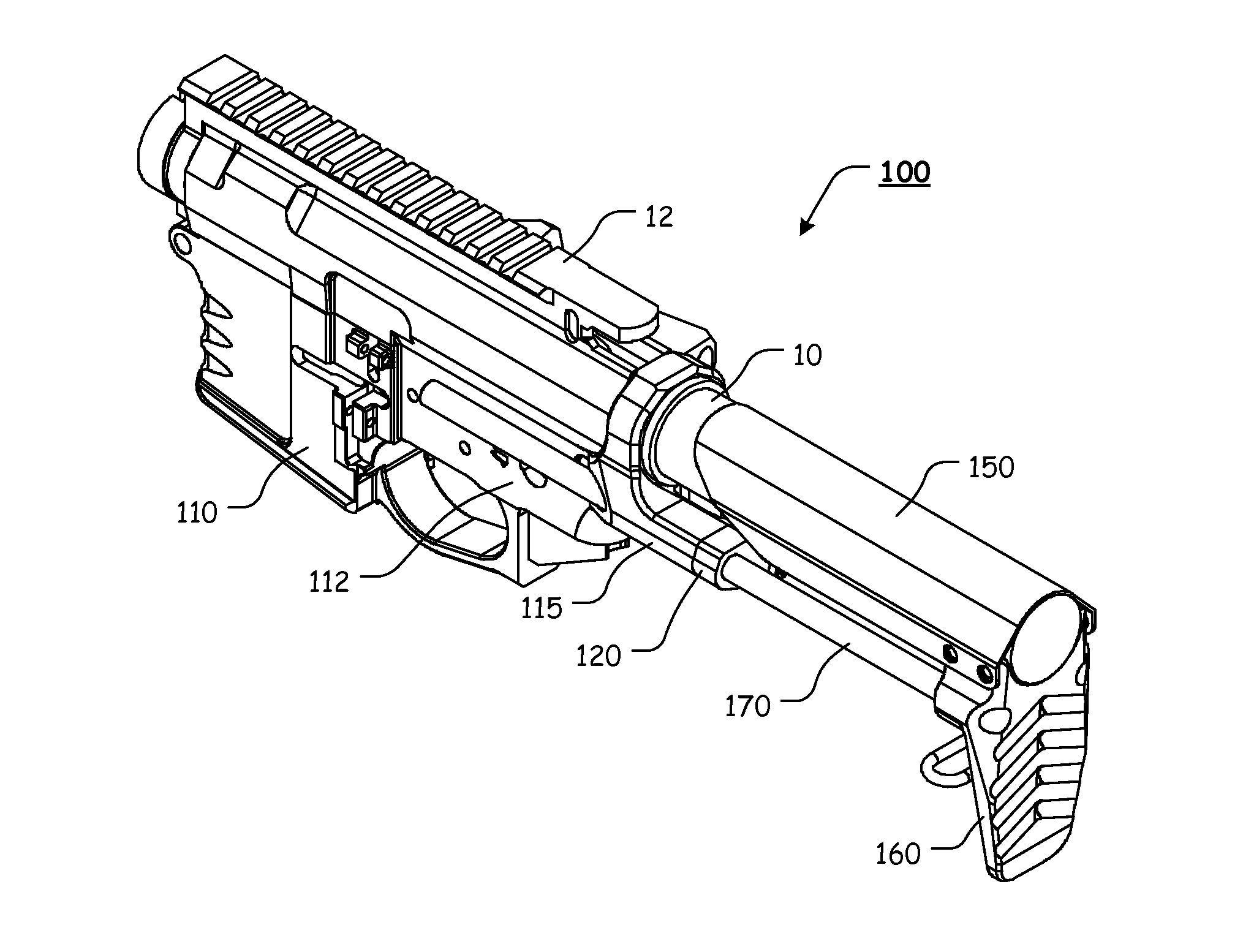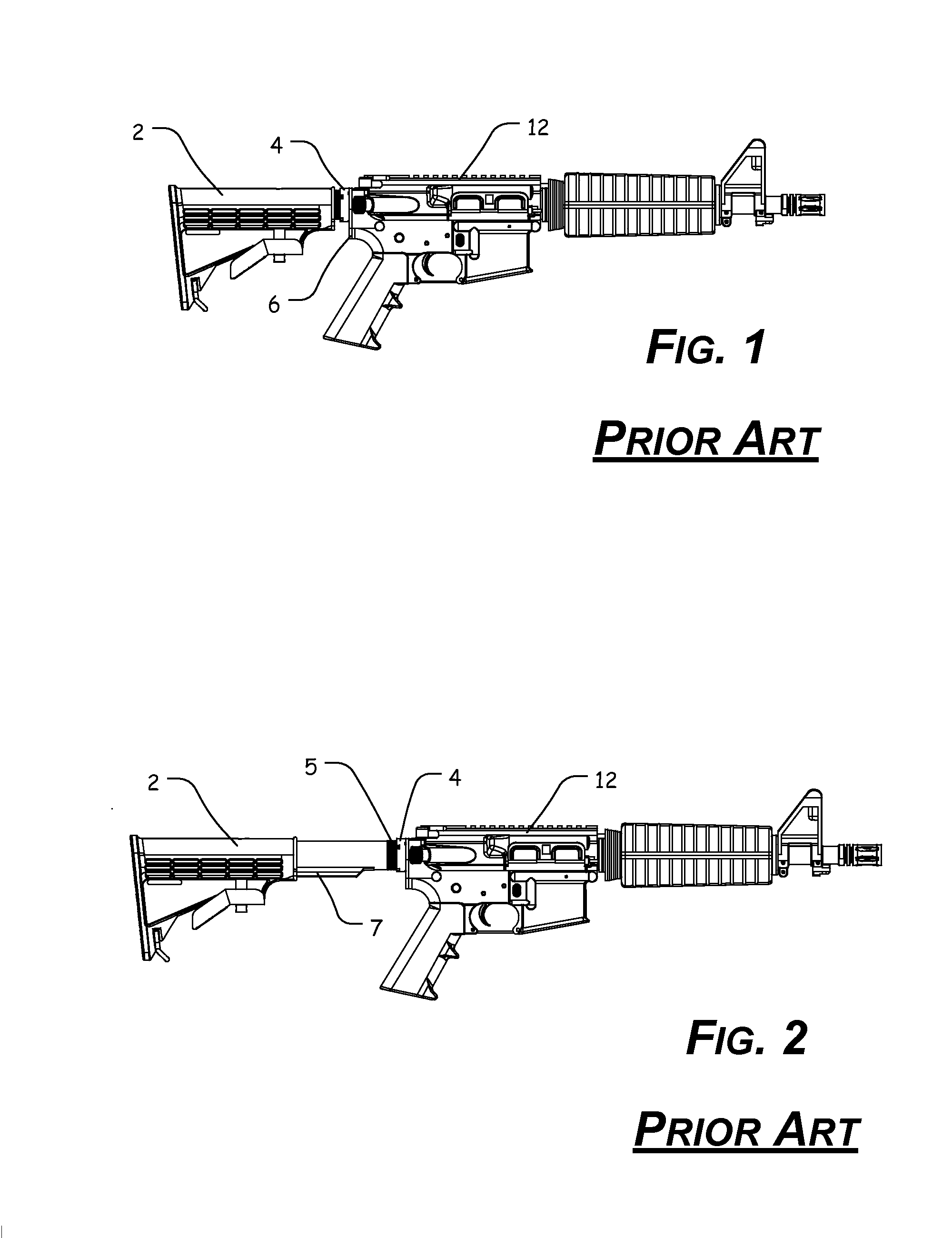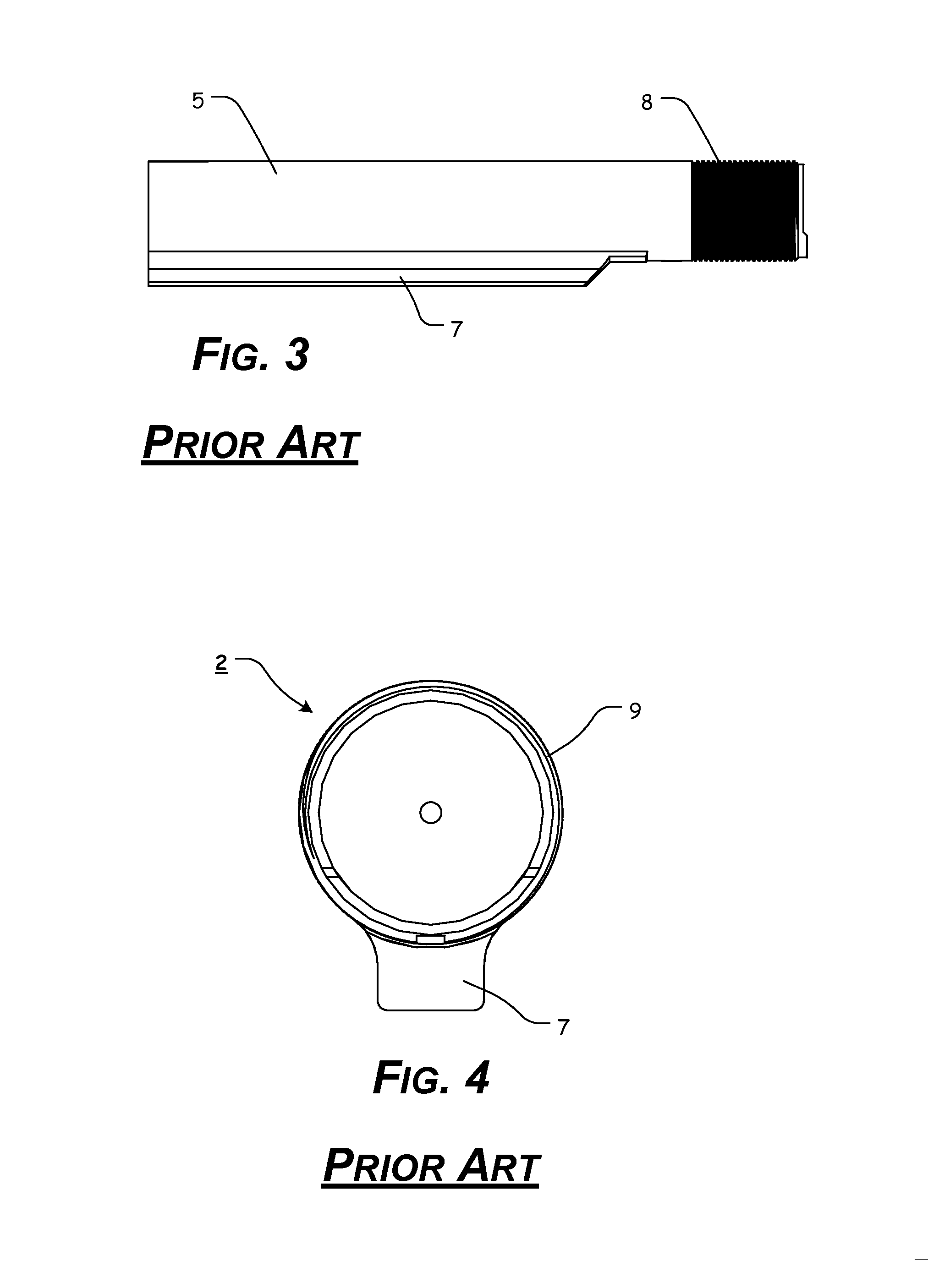Receiver and Collapsible Buttstock for a Firearm
- Summary
- Abstract
- Description
- Claims
- Application Information
AI Technical Summary
Benefits of technology
Problems solved by technology
Method used
Image
Examples
Embodiment Construction
[0096]For simplicity and clarification, the design factors and operating principles of the receiver and collapsible buttstock according to this invention are explained with reference to various exemplary embodiments of a receiver and collapsible buttstock according to this invention. The basic explanation of the design factors and operating principles of the receiver and collapsible buttstock is applicable for the understanding, design, and operation of the receiver and collapsible buttstock of this invention. It should be appreciated that the receiver and collapsible buttstock can be adapted to many applications where a receiver and collapsible buttstock or strap can be used.
[0097]As used herein, the word “may” is meant to convey a permissive sense (i.e., meaning “having the potential to”), rather than a mandatory sense (i.e., meaning “must”). Unless stated otherwise, terms such as “first” and “second” are used to arbitrarily distinguish between the elements such terms describe. Th...
PUM
 Login to View More
Login to View More Abstract
Description
Claims
Application Information
 Login to View More
Login to View More - R&D
- Intellectual Property
- Life Sciences
- Materials
- Tech Scout
- Unparalleled Data Quality
- Higher Quality Content
- 60% Fewer Hallucinations
Browse by: Latest US Patents, China's latest patents, Technical Efficacy Thesaurus, Application Domain, Technology Topic, Popular Technical Reports.
© 2025 PatSnap. All rights reserved.Legal|Privacy policy|Modern Slavery Act Transparency Statement|Sitemap|About US| Contact US: help@patsnap.com



